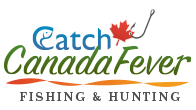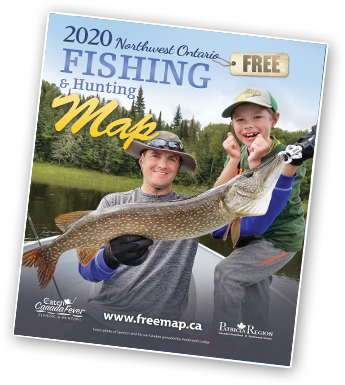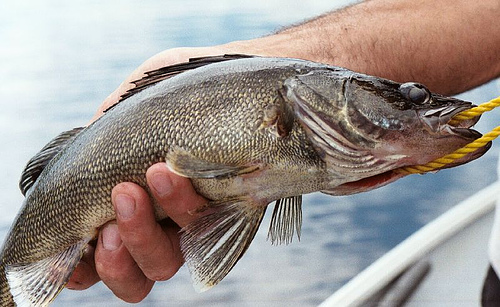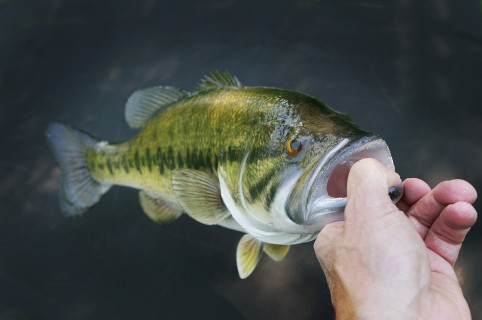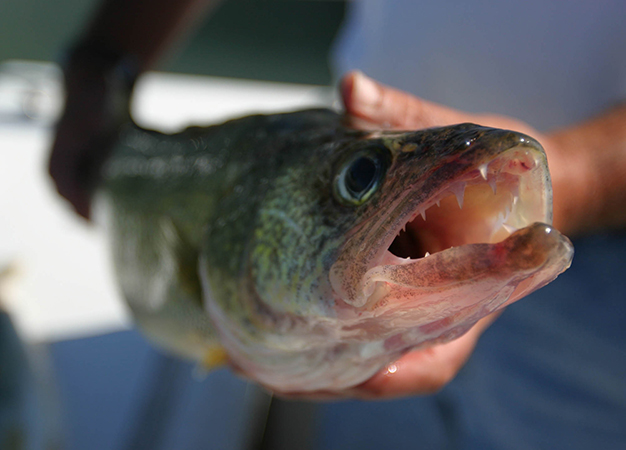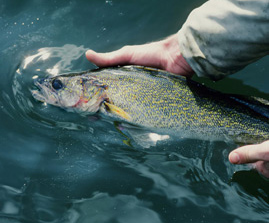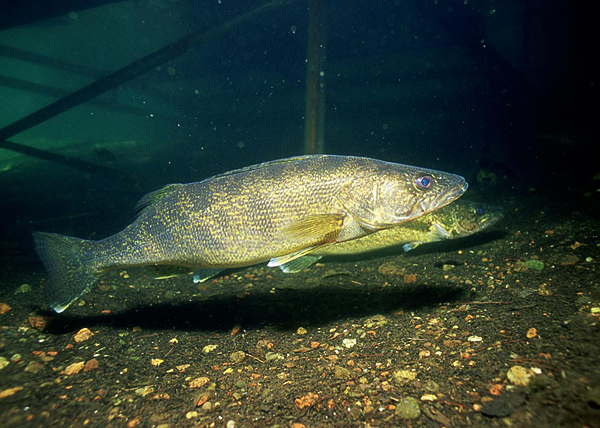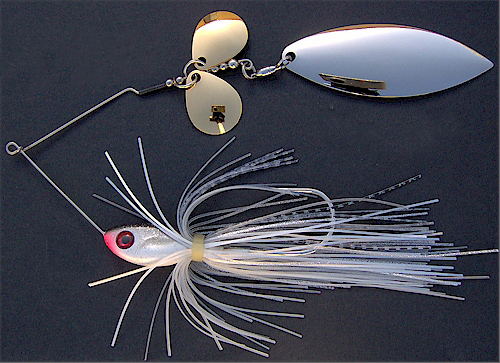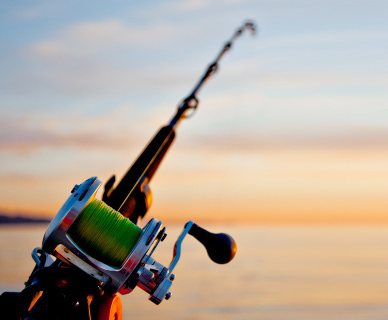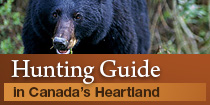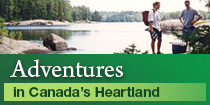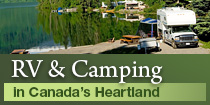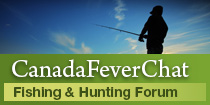Canada Walleye Fishing Lodges
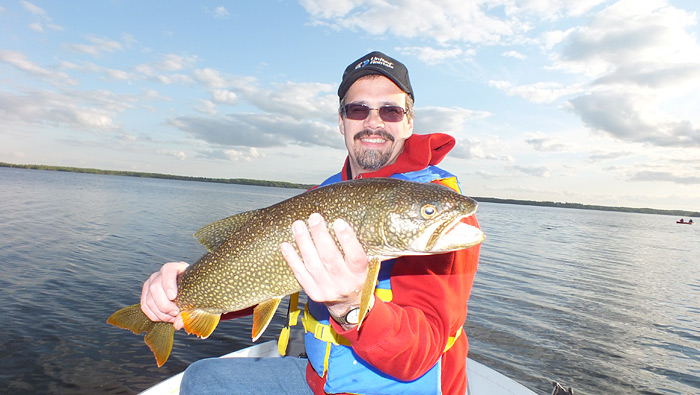 Fishing in Canada is an amazing experience you will cherish forever. Canada walleye Fishing Lodges are a great place to consider for your next vacation. Canada has many lakes perfect for Walleye fishing. Some of the Canada lakes have even caught record sized Walleye! No two Canada Walleye Fishing Lodges are alike. Each lodge offers their own style of cabins, plans, variety of fish, types of lakes, guides and service. It is important to think about what will be important to you when planning your Canada Walleye Fishing Lodge experience. Picture this – you arrive at a lodge in Canada on a hot summer day, whether itʼs by bus, your own vehicle or plane. You step outside and take in all the beauty around you. Trees, flowers and a beautiful lake. A friendly Canada fishing lodge worker greets you and shows you to your own cabin at the lodge. The next morning, you wake up to birds singing and the sun shining and after a satisfying breakfast at the lodge you head to the lake for some quality Canada fishing. The rest of the morning is spent on a beautiful Canadian lake, enjoying the sport of walleye fishing. After a successful morning of catching some tasty walleye you stop at a small island near the lodge and have a shore lunch. You have a quick swim in the refreshing Canadian lake. You then go fishing for the rest of the afternoon and head back to the lodge when the sun starts to set. If this Canada walleye fishing lodge vacation sounds great to you, you will need to figure out exactly what you would like to experience during your stay in Canada to plan your best fishing lodge vacation yet.
Fishing in Canada is an amazing experience you will cherish forever. Canada walleye Fishing Lodges are a great place to consider for your next vacation. Canada has many lakes perfect for Walleye fishing. Some of the Canada lakes have even caught record sized Walleye! No two Canada Walleye Fishing Lodges are alike. Each lodge offers their own style of cabins, plans, variety of fish, types of lakes, guides and service. It is important to think about what will be important to you when planning your Canada Walleye Fishing Lodge experience. Picture this – you arrive at a lodge in Canada on a hot summer day, whether itʼs by bus, your own vehicle or plane. You step outside and take in all the beauty around you. Trees, flowers and a beautiful lake. A friendly Canada fishing lodge worker greets you and shows you to your own cabin at the lodge. The next morning, you wake up to birds singing and the sun shining and after a satisfying breakfast at the lodge you head to the lake for some quality Canada fishing. The rest of the morning is spent on a beautiful Canadian lake, enjoying the sport of walleye fishing. After a successful morning of catching some tasty walleye you stop at a small island near the lodge and have a shore lunch. You have a quick swim in the refreshing Canadian lake. You then go fishing for the rest of the afternoon and head back to the lodge when the sun starts to set. If this Canada walleye fishing lodge vacation sounds great to you, you will need to figure out exactly what you would like to experience during your stay in Canada to plan your best fishing lodge vacation yet.
Canada Walleye
Walleye are mostly olive and gold in colour. The dorsal side of a walleye is olive, grading into a golden hue on the flanks. The olive/gold pattern is broken up by five darker saddles that extend to the upper sides. The colour fades to white on the belly. The mouth of a walleye is large and is filled with many sharp teeth. The first dorsal and anal fins are spinous, as is the operculum or hard bony flap covering the gills. Canada walleyes are distinguished from their close cousin the sauger by the white spot on the lower lobe of the caudal or tail fin which is absent on the sauger. In addition, the two dorsals and the caudal fin of the sauger are marked with distinctive rows of black dots which are absent from or indistinct on the same fins of walleyes. Canada walleye are well known for their white, firm and delicately tasting flesh which makes them perfect for fishing for a tasty Canada shore lunch.Going by the scientific name of Sander vitreus , the more common name “Walleye”, comes from the fact that the eyes of these fish, like those of lions, reflect white light. This “eyeshine” is the result of a light-gathering layer in the eyes called the tapetum lucidum, which allows the walleye to see well in low-light conditions. In fact, many anglers go fishing for walleyes at night since this is when major feeding patterns occur. The walleye’s eyes also allow them to see well in turbid waters (stained or rough, breaking waters), which gives them an advantage over their prey. Thus, when fishing walleye anglers will commonly look for days and locations where there is a good “walleye chop” (i.e., rough water or a transition zone). This beneficial vision also allows the walleye to populate the deeper regions in a lake, and they can often be found in deeper water, particularly during the warmest part of the summer.
Canada walleye fishing tactics vary from season to season and also on the time of day you might find yourself fishing on in search of a trophy walleye. When fishing in the spring months of May and June, the walleye are more specific from a location perspective. With the spawning season complete, the fishing is ideal in the shallows along the river mouths and shoreline areas with plenty of rubble. Canada walleye fishing during the daylight hours with small metallic coloured spoons is certain to produce results and jigs of various colours are very effective as well. The key with jigs is to be able to feel the lake bottom. When walleye fishing, make sure to adjust the weight of your jig according to depth and speed. If you are fishing in shallow water or are anchored and sitting still, go light. If it’s deep, or the wind is blowing hard, go fishing with a heavier weight jig. When fishing in the summer months of July and August the walleye tend to spread out. The weather is ideal and the walleye fishing is explosive. When fishing, it is a good idea to use a sonar unit to locate underwater reefs, submerged timbers and long-tapering points in water 5 to 20 feet deep. During the daylight hours in July and August, the walleye can also be found in the weedy areas where they congregate in search of bugs, minnows and small perch. During these months, the larger fish tend to head for deeper water and fishing the open water and deep reefs after dark has been known to produce quality fish rather than quantities.
The fall months of September and weather permitting, early October are still excellent for Canada walleye fishing. These months bring the fishing back into shallow waters and offer up some exciting casting action. Perch coloured trolling crank baits and trolling weighted spinners like Little Joes tipped with a minnow are suggested techniques.
Don’t think that the warmer months are the only time for some great Canada Walleye Fishing- winter provides the ideal setting to partake in snowmobiling, snow shoeing and of course, ice fishing. Although the weather may seem cold at times, the action and excitement will certainly warm you up quickly.
How to Fillet a Walleye
Filleting a walleye is easy once you figure out the technique. It takes patience and skill but with enough practice you can go through a lot of walleye fairly quickly. If you have a guide they may fillet your walleye for you, or if you are going alone you may want to know for a shore lunch.
 The first step to filleting a walleye is to cut off the head just behind the gills. Then, hold the walleye by the tail. Use your fillet knife to cut away from you, across the body of the walleye tail to head. Use the backbone to guide your knife. Next you are going to want to take the skin off. Start by holding the fillet by the tail, skin side down. Hold the knife crosswise across the fillet and insert the knife between the skin and the flesh. While holding the skin, cut in the direction of where the head used to be. These techniques may not work as well with larger fish. When filleting large Canada Walleye, make a deep cut behind the gills (about halfway through the fish thickness). Cut another slit a few inches in length along the top of the Walleye. Use the tip of you knife to cut the flesh away from the Walleye’s bones. The Walleye should open up. Once it is completely open, finish cutting it away by moving the knife along the spine.
The first step to filleting a walleye is to cut off the head just behind the gills. Then, hold the walleye by the tail. Use your fillet knife to cut away from you, across the body of the walleye tail to head. Use the backbone to guide your knife. Next you are going to want to take the skin off. Start by holding the fillet by the tail, skin side down. Hold the knife crosswise across the fillet and insert the knife between the skin and the flesh. While holding the skin, cut in the direction of where the head used to be. These techniques may not work as well with larger fish. When filleting large Canada Walleye, make a deep cut behind the gills (about halfway through the fish thickness). Cut another slit a few inches in length along the top of the Walleye. Use the tip of you knife to cut the flesh away from the Walleye’s bones. The Walleye should open up. Once it is completely open, finish cutting it away by moving the knife along the spine.
Fishing Licences
Of course, staying at a Canada walleye fishing lodge wouldn’t be very enjoyable if you couldn’t go fishing. That’s why it is important to remember to get a fishing license for you during your stay at the Canada walleye fishing lodge. You can find fishing licenses at bait and tackle stores or most of the region’s lodge. There a couple types of Canada fishing licenses, the main ones being the Sport-fishing license and the Conservation fishing license. The Sport-fishing License allows you the full limit, while the conservation fishing license which is a reduced limit. Canada also has Canada’s Family Fishing Week, which allows the family to fish without a license. You will have to check which week Canada Family Fishing Week is in the summer you plan on visiting.
Canada Walleye Fishing Tactics
There are many different fishing techniques. Knowing which fishing technique to use can be the difference between a slow day and and action packed day on the lake in Canada. The guides lodges offer are very knowledgable on which technique to use when fishing, however if you and your family plans on going alone, it is best to get a basic idea of which fishing technique to use. Lodges also may offer you tips and tricks without a guide if you just ask. Lure fishing is the use of lures to catch fish. Lure fishing is a good technique if you are looking for predatory fish such as Pike, Perch, Bass, Trout and Muskellunge. Lures come in three main types. Spinners and spoons wobble or spin similar to the movement of a real fish and are usually made of metal. Plugs work in a couple different ways, along the water surface, mid-water or deep on the bottom. They are usually made of wood or plastic. When lure fishing, it is a good idea to not stay too long in the same position. You want the fish to believe your lure is real, so it is a good idea to find lures that are shiny, or with scale patterns. Another good idea would be to constantly move the rod tip to create a change in direction, making your lure look like a fish in distress.
Lodges Vs Outpost
There are several types of Canada Walleye Fishing Lodge’s available. Choosing the right lodge can be the difference between a good and a great Canada Walleye fishing trip. First, there are fly-in outpost lodges. Fly-in Outfitters or owners have camps or lodges that are only accessible by plane. Their lodges are generally located on remote Canada lakes that have no road access. You drive to their base camp or airplane service provider and catch a flight out to the lodge or cabin. Fly-in Outfitters bring guests to their facility by either a wheeled or float plane depending on the lodge or camp. While most fly-in lodges use float planes designed to land on the water, there are a few that have their own private runways for landing wheeled planes. Prices generally include the cost of the return airfare from the outfitter’s base facility but always check when talking to a potential outfitter. Packages vary amongst outfitters and you don’t want to discover that there are extra costs. Depending on what time you arrive for your Canada walleye fly-in fishing trip, the lodge will either fly you in right away or provide overnight accommodations allowing you to catch the plane first thing in the morning. The size of your group will determine the type of aircraft the lodge will use. DeHavilland Otters and Beavers, Norseman, Cessna 180s and 185s as well as Beech 18s are commonly used aircraft. Did you know that in 1987, the Canadian Engineering Centennial Board name the Beaver is considered one of Canada’s 10 greatest engineering achievements of the 20th century? The Beaver was designed for flight in rugged and remote areas of the world. Its short takeoff and landing capability made it ideal for areas normally only accessible by canoe or foot, making it one of the perfect planes to use on a Canada walleye fishing trip. Government regulations must be followed for the maintenance and upkeep of all aircraft in order to make them safe for travel. You should find your experienced pilot to be professional, courteous and knowledgeable about all aspects of your Canada walleye fishing trip. Hecanmost likely provide you with some fishing tips and point out some of the “hot spots” for your Canada walleye fishing lodge stay. Many of the owner-operator pilots have accumulated numerous years of experience flying and several businesses now include family members as pilots as well. Actual flying time will vary depending on how far the Canada fishing lodge or outpost cabin is located from the base camp or flying provider.
Drive-in lodges are another great option during your stay in Canada. Drive-in lodges are accessible by vehicle. Some drive-in Canada walleye fishing lodges and resorts even have bus service, which takes care of all of the traveling for you and your family. Generally at drive-in lodges, there will be a main lodge with several lodges surrounding it. Canada drive-in lodges also offer housekeeping, meal preparation, guides and often other activities for the family, making them quite the crowd pleaser. Drive-in Canada walleye fishing lodges are often most popular because of their accessibility. The guides the lodges offer are very skilled angler’s that have often lived in the area for years and will guide you to the best walleye fishing spots to help you get the most out of your stay at the Canada walleye fishing lodge. They know all of the hot-spots, as well as what bait is best, different techniques, and drive-in lodges often have other activities to keep you busy such as hiking, blueberry picking, bird watching, local festivals, photography opportunities as well as swimming locations. There is a new experience waiting around every corner.
Housekeeping vs AP
The next step is choosing a meal plan for your Canada walleye fishing stay. Canada fly-In lodges may offer one of the following meal plans: American Plan, Modified American Plan or Housekeeping. If you choose American Plan, this plan typically includes all Meals and daily maid service, boats and motors, bait and gas and may include the service of a fishing guide for your Canada fishing lodge stay. Modified American Plan offers you a choice of which meals you want prepared, may or may not include daily maid service and you often pick and choose from services referred to above under American Plan. If you decide on the Housekeeping Plan for your Canada walleye fishing lodge stay, it generally includes a cabin rental, you provide your own food and cook your own meals. There is no daily maid service, add on boat and motor packages are generally available and most camps have bait and gas for sale.
Fly-In Outposts lodges are generally without housekeeping. Sometimes the staple foods are in the lodge and you will have to just bring in fresh meats, vegetables and beverages. If you don’t want to do the shopping for your fly-in fishing lodge stay, some of the outfitters offer a service where they will purchase your groceries and have them ready for you when you arrive to depart on your fly-in trip. All you have to do is supply them with your shopping list. Some cabins come completely equipped with items such as staple groceries, cleaning and paper supplies, bedding and linens but It’s always best to confirm all of these details of your fly-in fishing trip with the lodge you have chosen.
The most important thing to remember when planning a vacation at a Canada Walleye Fishing Lodge is to HAVE FUN and relax! With a little bit of planning ahead and the careful selection of a lodge that fits your needs, you are sure to have the vacation of a lifetime. And who knows? Maybe you’ll make it a tradition.

